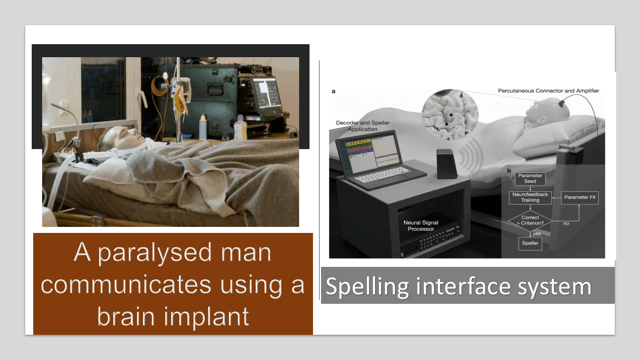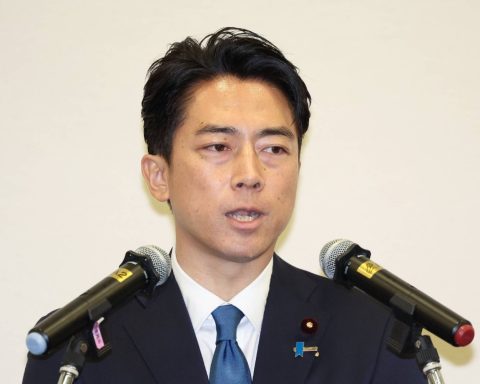Amyotrophic lateral sclerosis (ALS) is a neurodegenerative disorder. It is a disease that progressively affect the nervous system, attacking nerve cells in the brain and spinal cord. This attack slowly causes loss of muscle control so that the person is unable to speak, swallow or move the hands and feet.
The person also loses the ability to independently breathe due to paralysis of the diaphragm, and is then placed on artificial ventilation for the rest of his life.
Amyotrophic lateral sclerosis affects mainly 40 to 75-year olds, though it can happen at any age. It is always fatal, with life expectancy varying between 2 and 5 years, though some patients with ALS can live up to 12 years or more; for example Stephen Hawking, the famous theoretical physicist who died in 2018, lived for more than 50 years after he was diagnosed with ALS.
Join our WhatsApp ChannelAmyotrophic lateral sclerosis is hereditary in about 10% of the cases. This is called familial ALS; and children of people with this type of ALS have a 50-50 chance of developing the disease.
The disease affects different people to some varying degrees. In the final phase of the disease, some people may be still left with a little muscle control, but for others, muscle-controlled route of communication is shut off, as motor neurones progressively degenerate. People in this later group are said to be “locked-in” or in pseudocoma. They are still conscious of everything happening around them but cannot produce a movement or verbally communicate as a result of complete muscle paralysis. In such a case, they may still communicate by eye movements or blinking. Locked-in syndrome (LIS), is not only seen in ALS but in other motor neurone diseases.
In locked-in state, patients rely on assistive technology for communication. In this regards, there are many invasive as well as noninvasive brain computer interfaces (BCIs) available to assist the patient to communicate using eye-movements, facial muscles or neural signals. But if the patient loses the aforementioned ability to communicate or cannot voluntarily open his/her eyes anymore, there is no currently existing assistive technology in the market to provide voluntary communication. The patient is left without any means of communication, and is said to be completely locked-in.
READ ALSO: See Causes Of Sudden Unexplained Death In Childhood
Chaudhary and coworkers from the University of Tübingen, Germany, writing in the Tuesday, 22 March 2022 issue of Nature Communications, announced the possibility of a neural-based communication in a patient in a chronic completely locked-in state, without any reliably recorded eye movements. They implanted two 64 micro electrode arrays in the supplementary and primary motor cortex of a patient in a completely locked-in state with ALS (i.e. 3.2 mm wide electrode arrays on each part of the cortex). The supplementary area of the cortex contributes to movements while the primary area is responsible for direction of movements. The patient was able to control the rates at which neurones are fired by the device based on auditory (hearing) feedback. Using this technique, the patient (a man aged 36 years old), was able to select individual letters to form phrases and words and by this means communicated his needs and experiences.
It took quite a lot of fine-tuning and time but eventually, the man was able to form letters at a rate of a character per minute. He later communicated to the researchers that he tried using his eye-movement to change the audible tone of an output device specifically designed to navigate through letters.
The signal processing device is anchored through the skin but researchers are currently developing a new technique whereby the device could be magnetically attached to the head to circumvent the risk of infection.
The implant and subsequent therapy with the patient who was German, took place between 2018 and 2019. The patient’s communication centred on issues dear to him, which are body positioning, health status, choice of food, personal care and social interaction. From Day 107 after the therapy session began, he started to spell out phrases like, “head always straight”, meaning always place my head straight. He was even able to request for a beer (given through a gastronomy tube), and on Day 406 spelt, “for food I want to have curry with potato then Bolognese and potato soup.” In one session, he was able to interact with his 4-year old son, and form the sentence, “I love my cool son”. He followed this up two days later with, “Do you want to watch Disney’s Robin Hood with me’. The last recorded communication on Day 462 was, “My biggest wish is a new bed and that tomorrow I come with you for barbecue”.
READ ALSO: Why COVID-19 Vaccination Is Important For Pregnant Women
The study does demonstrate that communication with a completely locked-in person is still possible by adapting an interface (brain computer interface, BCI) to individual ability. But the technology still has a long way to go before it could be marketed as an assistive technology. For example, to design, test and maintain the system took quite a lot of time, and the system, estimated to cost $500,000 in the first 2 years, is too expensive for mainstream use. Software and hardware modifications, according to the researchers, need to be made before the system could be independently used by family members or carers without a measure of technical supervision. Perhaps with more research, the system could be made cheaper and more personalised to individual circumstances.














